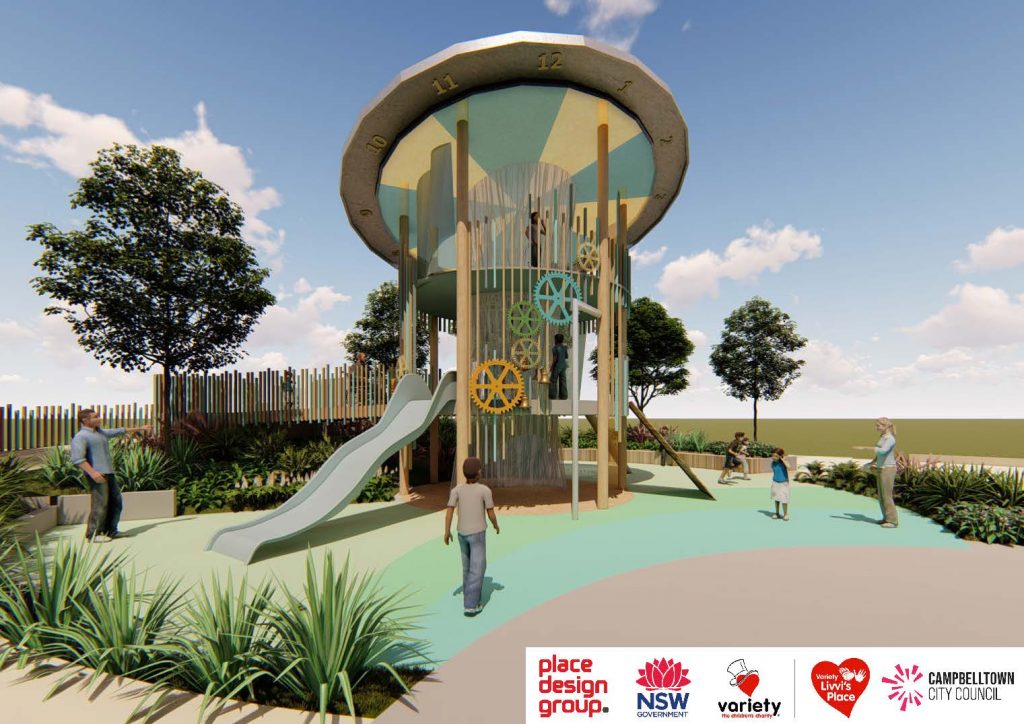INSIGHTS PIECE – Baz Richards | Design Lead
With public parks and playgrounds out of bounds over the past few months, parents have been pushed to craft clever ways to entertain their kids and keep them physically and mentally stimulated.
The lack of access to green space and public parks during isolation has highlighted the important role that play spaces provide in being an outlet for kids to burn excess energy before, during and after school. Without this expenditure of energy, especially in children with additional emotional or physical needs, this can cause an increase in stress and anxiety and in turn cause additional pressure on the rest of the family.
There is one park in Italy that recognised the vital role of playgrounds, by creating a booking system for children with autism while in isolation, allowing children to play in a scheduled and safe manner, giving them the opportunity to release built-up stress and energy while stuck at home. This has made a massive difference to a number of families in the town of Rimini, Italy, allowing children to regain some normality after the disruption isolation has put on daily routine and activities.
Isolation has shown us that more than ever, play matters for everyone. Small playground design decisions can mean the difference between including or excluding children, which in turn creates an unsafe and undesirable place for kids to just be kids regardless of their physical or intellectual abilities.
The playground is the perfect place to practice different skills and experiences, from learning social skills to understanding how the body reacts to various heights and speeds. Our recent detailed design for the Variety Livvi’s Place Playground in Glenfield, New South Wales, is a great example of the work we are doing at Place Design Group (in collaboration with Variety the Children’s Charity ACT/NSW and Campbelltown City Council).

Above: Concept design for Variety Livvi’s Place
The design includes the application of six inclusive play design principles to ensure the space is designed with everyone in mind:
This helps people with physical, visual and sensory impairments to move freely and confidently around the play space with less confusion. Using different coloured soft fall play areas clearly define ‘zones’ of play activity, as well as providing a clear separation between areas of play, circulation or seating.
Having clear signage at key arrival points ensures navigating the space is an easier task for everyone. Play ‘communication’ boards use pictures rather than words, allowing non-verbal children or those with limited speech to communicate their play preferences to a parent or carer, thus creating a much more fulfilling play experience for everyone.
Play is diverse and includes social and sensory (as well as the physical play), so including simple spaces with grass lawn and planting supports less prescribed play outcomes. These spaces can also be ‘quiet’ areas that provide a much needed break out space for anyone who becomes easily over stimulated in a play environment.

Including furniture that support everyone’s needs will extend the time people will stay at the space. Customised seats and picnic settings (provided with back and armrests) make a much more comfortable stay for those with low muscle tone or core strength. Shade sails and shade structures over picnic and seating areas provide a comfortable and sun-safe setting. Accessible water bubblers and a nationally accredited ‘Changing Places’ toilet and changing facility will ensure a visit to the play space can be a full day out (rather than a short-lived experience) for a family with a severely disabled child.
By incorporating accessible ‘bucket’ seats on swings (with back support) in lieu of standard swing seats, as well as a ‘harness seat’ on a standard double flying fox, we can include children with postural support needs to participate in the fun.
You are never too old to play, for grandparents and those with less mobility is important to allow play to happen between young and old, particularly when so many grandparents take children to play spaces these days. Including low to ground play experiences such as low balance beams and in-ground trampolines means grandparents can improve their core strength and agility by participating in play (rather than watching from the sidelines).
As designers of public spaces, we have a responsibility to make sure our play spaces are inclusive for all. The creation and re-creation of parks and playgrounds for everyone is essential, and one that we continue to focus on.

Design Lead
With a passion for inclusive design and a background specialising in play space design, Baz Richards, Design Lead at Place Design Group is an advocate for the profession of Landscape Architecture as a catalyst for positive social change.
A registered Landscape Architect with 10 years of local and international experience, Baz has delivered a diverse portfolio of landscape projects in Australia, ranging in scale from open space recreation planning strategies through to the detailed design of commercial centres, UNESCO world heritage parks and all-abilities play spaces.